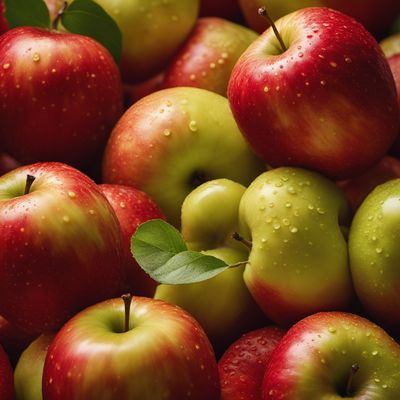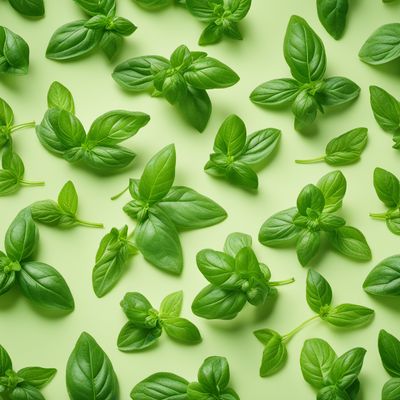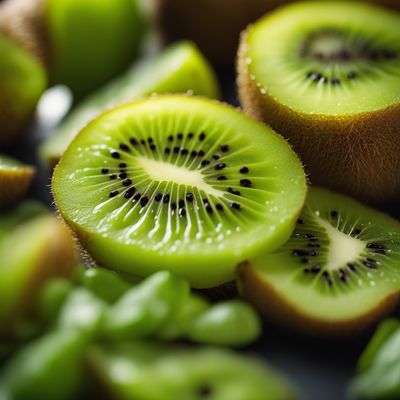
Ingredient
Mandarin flavour
The Zesty Essence of Citrus Delight
Mandarin flavor is derived from the essence of mandarin oranges, known for their bright orange color and sweet, tangy taste. It possesses a refreshing and zesty aroma, reminiscent of freshly peeled mandarin oranges. The flavor is characterized by its citrusy and slightly floral notes, with a hint of sweetness. It adds a delightful tang to recipes and can be used in both sweet and savory dishes. The flavor is often used in beverages, baked goods, sauces, dressings, and confections, providing a burst of citrus freshness.
Origins and history
Mandarins are believed to have originated in China and have a long history dating back thousands of years. They were highly valued in Chinese culture and were often given as gifts to emperors. Mandarins were later introduced to Europe and other parts of the world through trade routes. Today, mandarins are cultivated in various countries, including China, Spain, the United States, and Brazil.
Nutritional information
Mandarin flavor is low in calories and fat. It is a good source of vitamin C, providing a boost to the immune system. It also contains dietary fiber and antioxidants that contribute to overall health and well-being.
Allergens
Mandarin flavor does not typically contain any known allergens. However, individuals with citrus allergies should exercise caution.
How to select
When purchasing mandarin flavor, look for reputable brands that use natural ingredients and avoid artificial additives. Check the label for any additional information on the sourcing and production process. Opt for flavors that are concentrated and free from any off-putting or artificial aftertaste.
Storage recommendations
To maintain the freshness and quality of mandarin flavor, store it in a cool, dark place away from direct sunlight. Ensure that the container is tightly sealed to prevent any moisture or air from entering. Proper storage will help preserve the flavor's potency and extend its shelf life.
How to produce
Mandarin flavor is typically produced through the extraction of essential oils from mandarin oranges. This process involves carefully peeling and pressing the oranges to release their aromatic oils. Amateur producers can experiment with making their own mandarin flavor by infusing mandarin peels in a neutral alcohol or oil and allowing it to steep for a period of time.
Preparation tips
When using mandarin flavor, start with a small amount and gradually add more to achieve the desired intensity. It is a versatile ingredient that can be used in both sweet and savory recipes. Add a few drops of mandarin flavor to beverages, such as cocktails or mocktails, for a refreshing twist. Incorporate it into baked goods, such as cakes, cookies, or muffins, to infuse them with a citrusy aroma. It also pairs well with seafood, salads, dressings, and sauces, adding a bright and tangy element to the dish.
Culinary uses
Mandarin flavor is commonly used in a variety of culinary applications. It is often added to desserts, such as custards, ice creams, sorbets, and fruit salads, to enhance their flavor. It can also be used in marinades, glazes, and sauces for meats, poultry, and seafood, providing a tangy and aromatic element. Additionally, mandarin flavor is popular in beverages, including teas, smoothies, and cocktails, adding a refreshing citrus twist.
Availability
Mandarin flavor is widely available in grocery stores, specialty food stores, and online retailers. It can be found in both liquid and powdered form, offering convenience and versatility in its usage.
More ingredients from this category » Browse all

Bubblegum flavour
"Sweet and Playful: Exploring the World of Bubblegum Flavor"

Rum flavour
The Essence of Caribbean Spirit

Thyme flavour
The Aromatic Herb: Thyme

Boysenberry flavour
The Enigmatic Essence: Unveiling the Boysenberry Flavor

Sherry flavour
"The Art of Sherry: Unlocking the Essence of Flavour"

Apple flavour
The Essence of Apples

Medium hot flavour
The Fiery Essence of Medium Heat

Yoghurt flavour
The Creamy Indulgence: Yoghurt Flavour

Tamarind flavour
The Tangy Delight: Tamarind Flavour

Basil flavour
The Fragrant Herb: Unveiling the Delightful Essence of Basil Flavor

Kiwi flavour
The Tangy Delight

Ham flavour
Unlocking the Essence of Smoky Delight